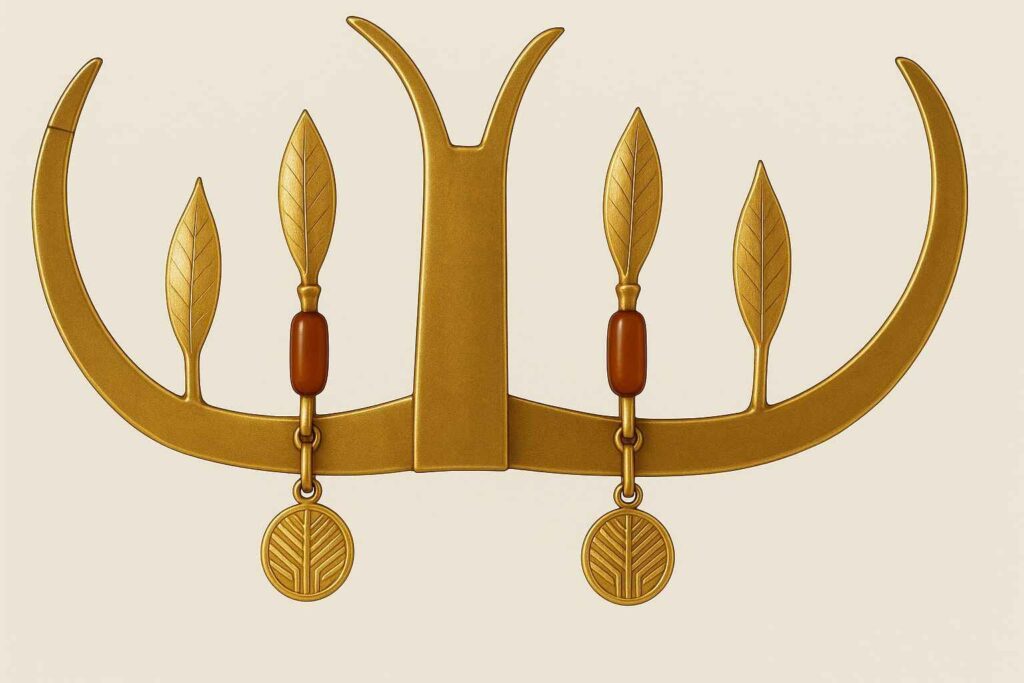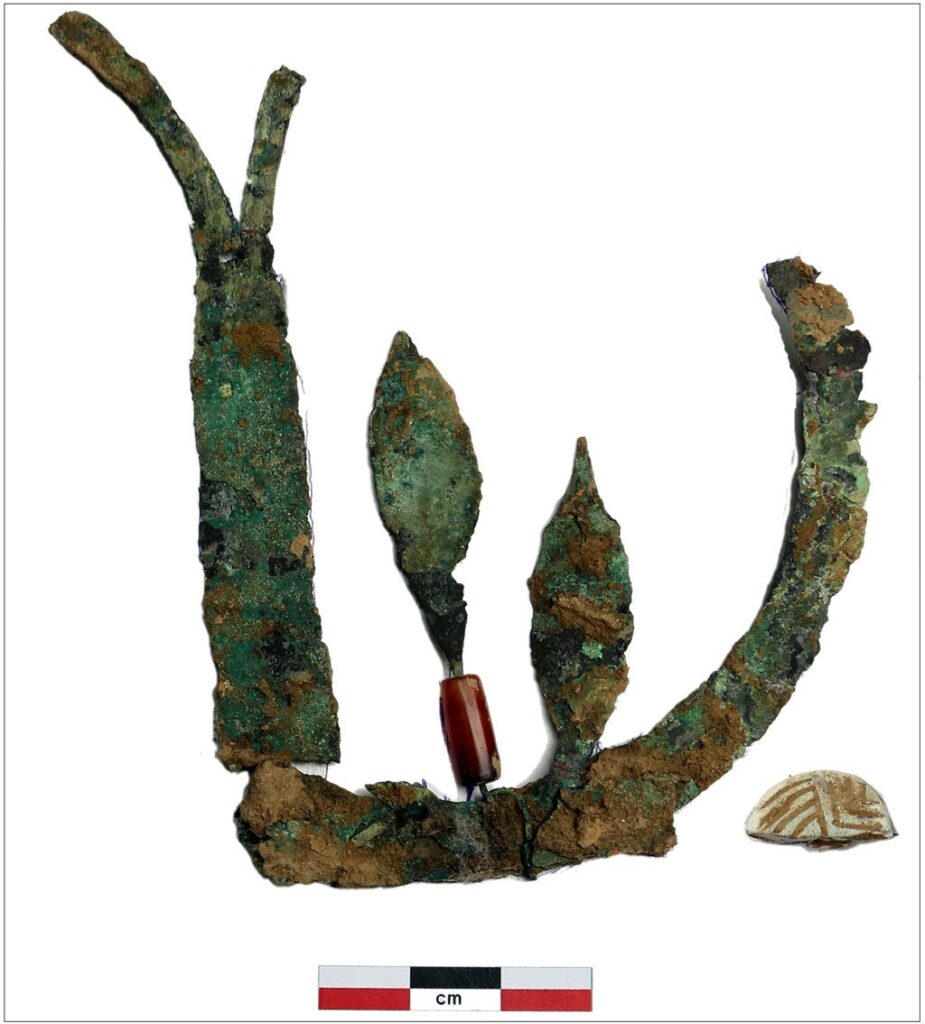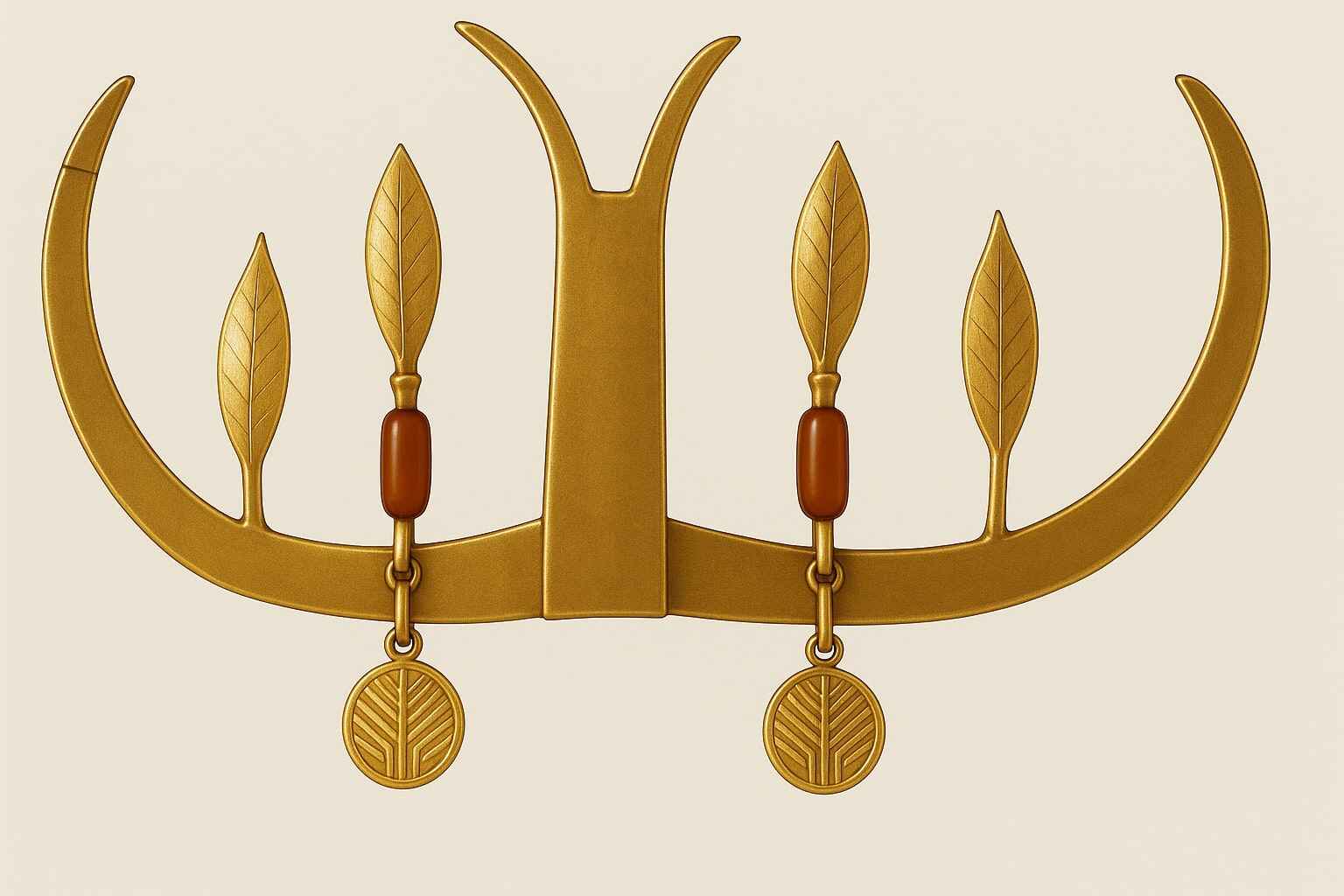
Imagine holding a piece of history that whispers secrets of a forgotten era—a time when ancient civilizations thrived along the banks of the Indus River, crafting stories of power, ritual, and artistry. In 2018, archaeologists in Uttar Pradesh, India, unearthed such a treasure: a 4,000-year-old brass crown from the mature Harappan period (2200–2000 B.C.), discovered near Sinauli in the Chandayan region. This magnificent artifact, only the second of its kind from the Indus Valley Civilization, offers a rare glimpse into the lives of ancient royalty—or perhaps priests—who once ruled these lands. Let’s dive into the story of this crown, its restoration, and what it tells us about India’s ancient past.
A Discovery That Rewrites History
In the dusty plains of Sinauli, about 70 kilometers from Delhi, archaeologists from the Archaeological Survey of India (ASI) made a groundbreaking discovery in 2018. While excavating a site known for its Harappan connections, they unearthed a burial ground that revealed more than just bones—it revealed a legacy. Among the findings was a brass crown, meticulously crafted with intricate designs, dating back to 2200–2000 B.C. This crown, adorned with leaf-like projections, red carnelian beads, and circular ornaments, was found alongside other artifacts, including a chariot and a warrior’s helmet, suggesting it belonged to someone of immense importance.

The crown’s design is striking: two prominent leaf-shaped projections rise from its center, flanked by smaller spikes, with red beads dangling delicately from its sides. The base is decorated with circular motifs, possibly symbolizing celestial or spiritual significance. Experts believe this crown could have been worn by a ruler, a high priest, or a ceremonial figure during sacred rituals. Its discovery marks a pivotal moment in understanding the social hierarchy and cultural practices of the Indus Valley Civilization, one of the world’s oldest urban societies.
A Regal Figure Brought to Life

Imagine a Harappan leader, adorned in rich, embroidered garments of crimson and gold, standing before their people. The restored brass crown sits proudly on their head, its polished surface gleaming in the sunlight. The leaf-like projections rise like a symbol of authority, while the red beads catch the eye, drawing whispers of awe from the crowd. This is more than a crown—it’s a statement of power, a bridge between the earthly and the divine.
The restored crown, now on display in a museum, allows us to envision this scene with stunning clarity. It’s a reminder of the ingenuity and artistry of the Harappans, who, despite leaving no written records we can yet read, speak to us through their creations. This crown isn’t just an object; it’s a story, a legacy, and a call to explore the depths of India’s ancient history.
Why This Matters Today
The discovery and restoration of the Sinauli crown aren’t just archaeological triumphs—they’re a source of inspiration. They remind us that history is alive, waiting to be uncovered and understood. For India, this crown is a symbol of cultural pride, a testament to the brilliance of its ancestors. For the world, it’s a piece of the human story, showing how even 4,000 years ago, our predecessors sought to express power, beauty, and spirituality through art.
This artifact also highlights the importance of preserving our past. The ASI’s efforts in Sinauli, combined with modern restoration techniques, ensure that future generations can marvel at this crown and learn from it. It’s a call to action for all of us to support archaeological research, visit museums, and engage with history in meaningful ways.
Follow us for more stories from history, and don’t forget to share this article with fellow history enthusiasts!

